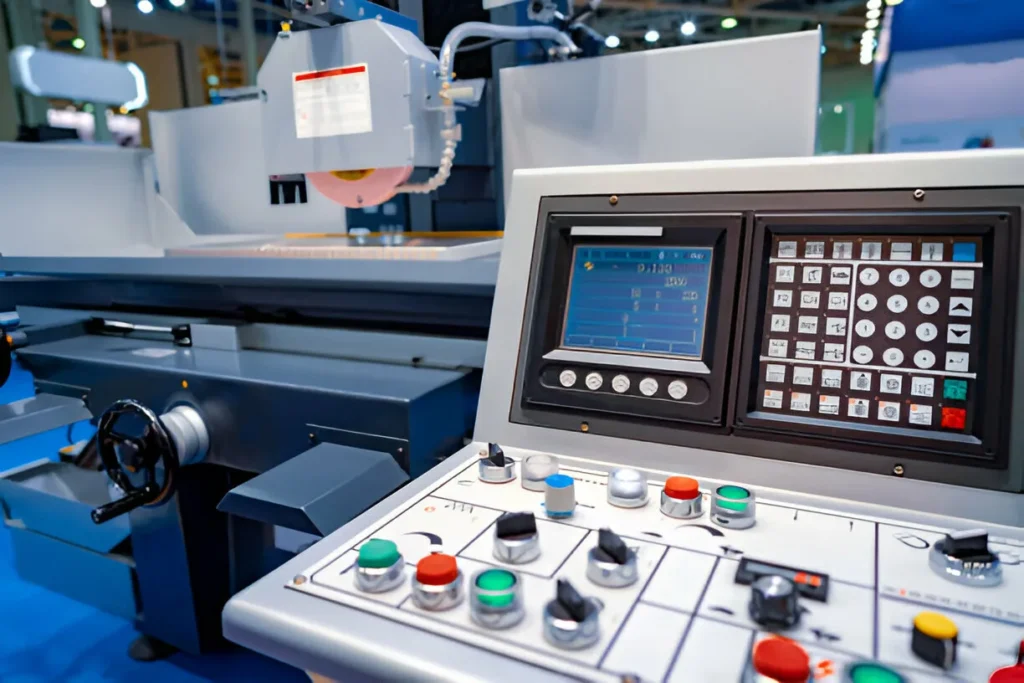Have you ever wondered how complex mechanical systems achieve precise control and timing?
Cam switches play a crucial role in enabling this precision in modern machinery. These switches convert rotary motion into precisely timed electrical signals, allowing for accurate control of mechanical processes.
From automotive engines to industrial automation, cam switches are essential components that ensure reliable and efficient operation across a wide range of applications.
Working Principle of Cam Switch
A cam switch operates by utilizing a rotating cam to actuate electrical contacts, enabling or disabling circuits at precise angles of rotation. The cam, typically made of insulating material, features a contoured surface that interacts with follower mechanisms connected to switch contacts.
As the cam rotates, the followers ride along the cam profile, causing the switch contacts to open or close at predetermined points. This allows for precise control and timing of electrical circuits based on the cam’s angular position.
Cam switches offer flexibility in design, allowing for multiple switch contacts to be actuated in a specific sequence or at desired intervals. By customizing the cam profile and positioning of followers, engineers can achieve complex switching patterns tailored to specific application requirements.
Key characteristics and selection criteria of cam switch
Cam switches offer precise control and reliable switching in mechanical systems. When selecting a cam switch, consider the number of switching positions, rated current and voltage, and the required switching sequence.
The switch’s mechanical durability, indicated by its service life, is crucial for long-term reliability. Ensure the cam switch’s enclosure provides adequate protection against environmental factors like dust, moisture, and corrosion.
Cam profile determines the switch’s behavior during rotation, influencing timing and duration of switch activation. Select a cam profile that aligns with the application’s requirements for precision and control.
Mounting options and dimensions should be compatible with the intended installation location. Lastly, consider any additional features such as emergency stop functionality or auxiliary contacts that may enhance the cam switch’s suitability for the specific application.


Application of cam switch in industrial automation
Cam switches play a vital role in industrial automation systems. They enable precise control and sequencing of mechanical operations in manufacturing processes, assembly lines, and packaging equipment.
Cam switches can be programmed to activate or deactivate various components at specific intervals or positions, ensuring synchronized and efficient automation. They are commonly used to control motors, solenoids, valves, and other electromechanical devices in industrial settings.
The rugged construction and reliable performance of cam switches make them suitable for harsh industrial environments. They can withstand frequent switching cycles, vibrations, and temperature variations, ensuring long-term operation and minimal downtime.
By integrating cam switches into industrial automation systems, manufacturers can achieve higher productivity, improved quality control, and reduced labor costs. The precise timing and sequencing capabilities of cam switches enable automated processes to run smoothly and consistently, minimizing human intervention and errors.
Application of cam switch in power system
Cam switches play a critical role in power system control and protection. They are used to control the switching of high-voltage circuits, such as in switchgear and motor control centers. Cam switches provide reliable and precise switching operations, ensuring the safe and efficient distribution of electrical power.
In power substations, cam switches are employed for load switching, circuit isolation, and bypass applications. They allow operators to safely disconnect or reconnect sections of the power grid for maintenance or fault isolation purposes. The robust construction and high breaking capacity of cam switches make them suitable for handling the high currents and voltages present in power systems.
Cam switches also find application in generator control panels and automatic transfer switches (ATS). In generator control panels, they are used for generator synchronization, load sharing, and protection functions. ATS systems rely on cam switches to quickly and reliably transfer power between primary and backup sources in the event of a power failure, ensuring uninterrupted power supply to critical loads.
The precision control offered by cam switches is essential for maintaining power quality and stability in modern power systems. Their ability to provide multiple switching positions and handle high electrical loads makes them indispensable components in power distribution and control applications.
Application of cam switch in transportation field
Cam switches find extensive use in various transportation applications. In automobiles, they control functions like windshield wipers, turn signals, and ignition timing.
Cam switches also play a vital role in railway systems. They are used for controlling the movement of trains, operating crossing gates, and managing signaling systems.
In aircraft, cam switches control landing gear, flaps, and other critical mechanical systems. Their precision and reliability ensure safe operation during takeoff, flight, and landing.
Cam switches are essential in transportation due to their ability to handle high electrical loads and withstand harsh environments. Their compact design and customizable configurations make them suitable for a wide range of applications in the transportation industry.
The use of cam switches in transportation enhances safety, efficiency, and control. As transportation systems continue to advance, the importance of cam switches in enabling precise mechanical control will remain significant.
In Conclusion
Cam switches play a vital role in enabling precision control in modern mechanical systems. Their unique design, versatility, and reliability make them indispensable components across various industries.
As technology advances, cam switches will continue to evolve and adapt to meet the ever-changing demands of mechanical systems. Engineers and designers should stay informed about the latest developments in cam switch technology to leverage their benefits fully.
To learn more about how cam switches can enhance your mechanical systems, consult with a trusted supplier or engineering expert today.

